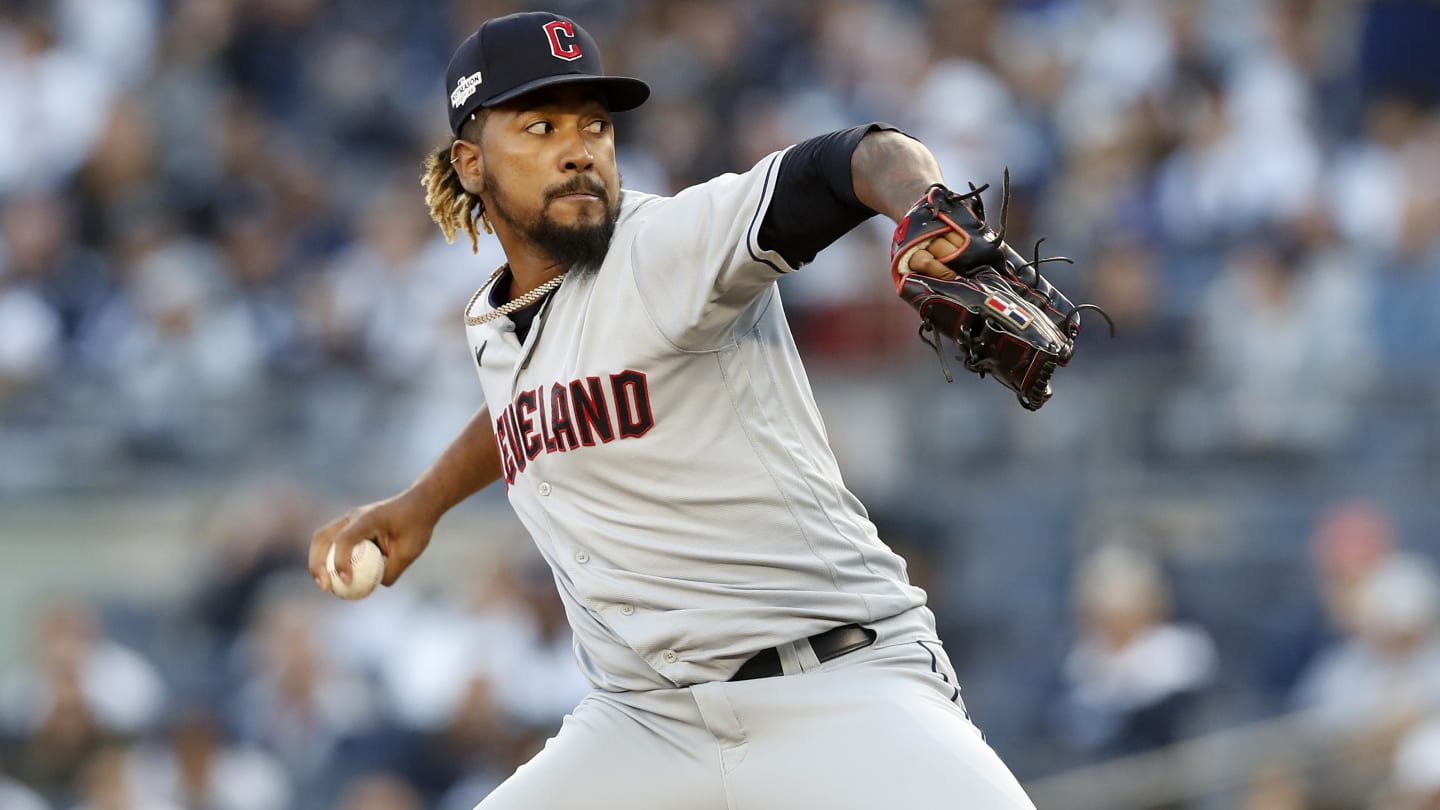“The Incredible Transformation of Jerry Dybzinski to Emmanuel Clase: The History of the Cleveland Guardians”
The butterfly effect is a crazy thing, especially in baseball. There are so many stories out there about a random trade, signature, or draft pick that results in a completely different player and – hopefully – difference maker.
The Cleveland Guardians have one of the most interesting butterfly effects in the league right now. How many people know the name Jerry Dybzinski? A native of Cleveland, Ohio, he played six seasons in Major League Baseball, including three seasons with the Indians from 1980-83.
The Indians’ 15th-round pick in 1977 had a career-best .298/.355/.298 in 48 games in his second season in the league. Shortly after retiring, he bought a house in Chicago and became a financial analyst, most recently working as a business intelligence manager for Vario Inc, according to a 2013 Cleveland.com article. Seems like a nice guy, a picturesque life and an unforgettable MLB career to be.
What if I told you that a simple trade between the Indians and the Chicago White Sox, sending Dybzinski to Chicago in exchange for first baseman, outfielder and designated hitter Pat Tabler, would eventually become Emmanuel Clase, the Guardians’ flame-throwing all-star seamstress Just signed up for a long-term contract last year? A simple trade that gave the White Sox a backup fielder and the Indians their first five-season baseman eventually went on to become multiple All-Stars, a near-Hall of Famer and a Cy Young winner.
Tabler eventually became a bargain for the Guardians, who clawed their way through the mid-1980s, winning just one season in Tabler’s day. He became an All-Star in 1987 when he hit .307 with 11 homers and 86 RBIs. Tabler even earned the nickname “Mr. Clutch” for his success in key situations, especially with loaded bases. Dybzinski played two seasons for the White Sox and never batted better than a .235, though he came off the bench for the team’s 1985 World Series win.
Then, on June 4, 1988, Cleveland traded 30-year-old Tabler to the Kansas City Royals for helper Bud Black. in a (n observer reporter In Article of the Day, Royals general manager John Schuerholz called Tabler “one of the most effective RBI men and clutch hitters in the American League.” Black ended up playing in Cleveland for two and a half years, eventually becoming the starting pitcher. He was named an Opening Day starter for 1990, but in September of that season he was traded to the Toronto Blue Jays for pitcher Mauro Gozzo and two later-named players who ended up being Steve Cummings and Alex Sanchez.
Here production began to decline. Gozzo played just four major league games for Cleveland over two seasons before opting for free agency. Never seeing the majors in Cleveland, Cummings was transferred to Detroit the following May to name a player who would later be named (eventually the Tigers sent minor-league Eric Stone). Sanchez, however, despite only being with the Indians organization a month and 12 days, is bridging the gap to becoming the next Cleveland All-Star. In November 1990, he was traded back to Toronto for Willie Blair, a assist who spent a season with Cleveland and had a 2-3 record and a 4.50 ERA.
Black was 32 and Cleveland couldn’t get much out of the trade. The team went 75-85 in 1990 and lost 105 games the following year, so it didn’t really matter. But Blair was traded alongside Ed Taubensee — a viable major league catcher — in a deal widely regarded as one of the most one-sided deals in MLB history. The Houston Astros basically ditched Kenny Lofton and Dave Rohde, then fringe players, in hopes that Blair would work and Taubensee could bring some pop to the lineup. Blair only played one season at Houston and was selected to free agency, while Taubensee did not rejuvenate his career until he was traded to Cincinnati.
Meanwhile, Lofton became, well, Kenny Lofton. “I know they gave up on me and now I’m glad they did. One man’s junk is another man’s treasure,” Lofton said of the Astros selling the then-26-year-old outfielder. Star, four-time Gold Glove winner, five-time Stolen base leader and inductee of the Guardians Hall of Fame. If Black had just become Lofton in two years, Cleveland would have been very happy.
But unfortunately, after the glory days of the 1990s, the Cleveland front office had to start selling key pieces to save money for what would have become a huge payroll. Lofton was one of the cuts that had to be made and the Indians traded him and left Alan Embree to David Justice and Marquis Grissom. John Hart described the two players Cleveland received — and Lofton — as “franchise players.” Lofton helped the Atlanta Braves to an NLCS berth in 1997, and the Indians lost to the Miami Marlins in the infamous Game 7 of the World Series. Fortunately, Lofton re-signed with Cleveland this offseason.
Playing for parts of three seasons at Cleveland, Justice was a cornerstone of the team as it struggled to recapture the success of the mid-’90s. He was a 1997 All-Star and Silver Slugger for Cleveland and hit home runs at Jacobs Field through the summer of 2000. Once again, however, Hart had to choose between future prospects or losing Justice and inevitably being lured away from a much more lucrative assignment. The next Indians sent off rather than signing a major contract was Justice, and the New York Yankees parted ways with prospects Jake Westbrook, Zach Day and Ricky Ledée.
Do you recognize this first name? Westbrook was in the process of moving up to the big leagues and his 2000 season was cut short with a fractured rib. But after finally breaking into the starting rotation in 2002, when he helped transition a pitching team in an underperforming season, Westbrook became a staple of Cleveland teams in the mid-2000s. He batted 1,200 innings, cleaned 73-73 with a combined ERA of 4.24, and was a 2004 All-Star. By 2010, Westbrook was a mainstay in Cleveland’s rotation. Then, at the close of trading in 2010, Cleveland had to part with a onetime major league pitcher who became a staple.
They rebuilt three years from an ALCS berth in 2007 and had no use for an aging, more expensive Westbrook. The Indians ran a three-team trade with the St. Louis Cardinals and the San Diego Padres. He, Single-A pitcher Nick Greenwood and Cash went to the Cardinals. Cleveland got a little-known pitcher from the Padres’ system named Corey Kluber. Is everything coming together?
He wasn’t even listed in the Padres’ top 30 prospects at the time, but the following September Kluber made his major league debut for Cleveland. The rest, as they say, is history. Kluber was a two-time Cy Young winner, three-time All-Star, two-time AL ERA Victory Leader, and one-time AL ERA Leader. He was dominant for the Indians in their 2016 quest for Game 7 of the World Series. Despite becoming injury-prone in his final years with the team, a combination of age and tremendous dedication during Cleveland’s playoff runs made Kluber one of the league’s top pitchers and could potentially see his name in the Guardians Hall of Fame.
That brings us to December 15, 2019, completing this long line of deals and players. After a combined 36 years, the Indians traded clubs and cash to the Texas Rangers in exchange for Delino DeShields Jr. and Emmanuel Clase. Kluber played just one inning with Rangers before suffering a season-ending shoulder injury. Clase, meanwhile, has just signed a five-year, $20million extension and could be closer to the Guardians for the foreseeable future.
Never underestimate the power of a meaningless trade four decades ago.
Source: awaybackgone.com
Don’t miss interesting posts on Famousbio









